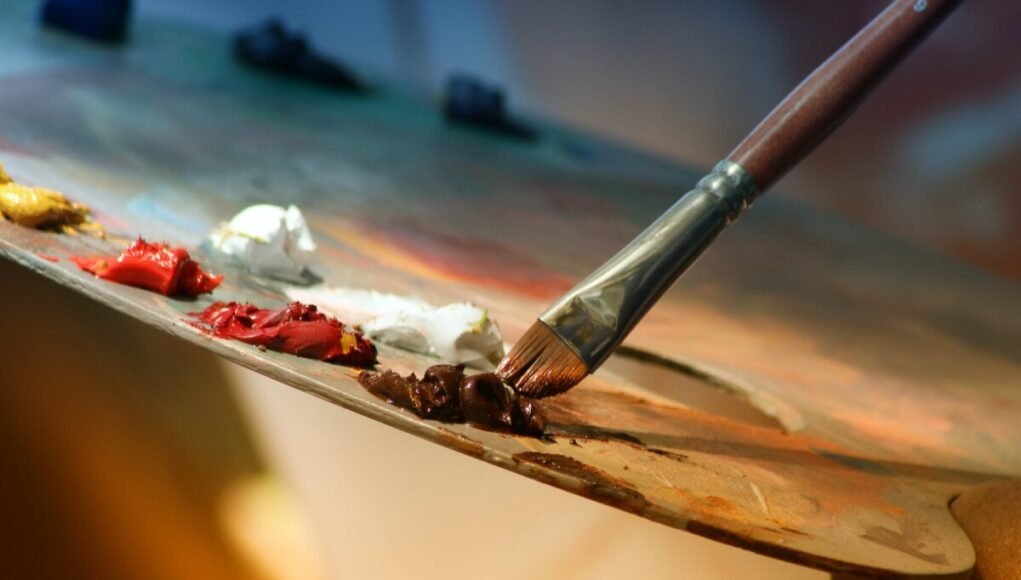Art has the incredible power to inspire awe, evoke emotion, and transport viewers to new worlds. But what is it that enables certain artworks to rise above the rest and be cemented in history as true masterpieces? The answer lies in the artistic techniques employed by the masters.
Understanding the nuances of artistic techniques provides the key to unlocking the secrets behind some of the world’s most iconic works of art. This article delves into the foundations of key artistic techniques and analyzes how they were expertly executed in various masterpieces across different eras and genres. Read on to enhance your appreciation of renowned artworks by decoding the techniques used to create them.
The Foundations of Artistic Techniques
Artistic techniques refer to the different tools and methods used by artists to create visual expressions on canvas, paper, walls, and more. Mastering these techniques is akin to learning the vocabulary of art, allowing artists to translate ideas, emotions, and messages into impactful compositions. Let’s examine some of the most fundamental techniques that form the building blocks of masterpieces.
Line
Lines are the most basic elements of art. Straight, curved, thick, thin, vertical, horizontal, diagonal – lines convey movement, emotions, and ideas. Skillful use of line gives art dynamism and rhythm.
Shape
Shapes refer to enclosed lines that define objects and negative spaces. Shapes can be geometric or organic. Placement of shapes creates balance and structure within a composition.
Color
Color holds immense expressive potential. Colors have symbolic meanings and cultural associations. Mixing primary colors creates secondary and tertiary colors with endless nuances. Manipulating colors is key in art.
Value
Value indicates the lightness or darkness of colors. High contrast values create drama while close values lend unity. Value establishes focal points and directs eye movement.
Texture
Texture adds depth and dimension to art. Tactile texture uses materials to create actual texture. Visual texture uses marks and strokes to represent texture. Textures enrich a work’s style and feel.
Space
Space refers to the illusion of 3D depth on a 2D surface. Overlapping, size, placement, detail, and color create perspective and space in art. Negative space also shapes the composition.
Proportion
Proportion refers to the size and scale of elements in a work. Alterations in proportion can convey meaning and emphasis. Accurate proportions give realism.
Rhythm
Rhythm creates movement by repeating lines, shapes, colors, values, and motifs. Variations add interest while patterns lend unity to a chaotic scene. Rhythm directs the viewer’s eye.
These core artistic techniques establish the foundation for any masterful work of art. Let us now analyze how artistic masters throughout history have expertly employed these techniques to create their magnum opuses.
Unveiling the Secrets of Masterpieces
Decoding the artistic techniques behind celebrated masterpieces allows viewers to appreciate the nuances of their composition and better understand the creator’s vision. Here we will uncover the secrets behind five iconic masterpieces from different eras and genres.
Mona Lisa by Leonardo da Vinci
Leonardo da Vinci’s Mona Lisa, created in the early 16th century Renaissance period, exemplifies the artist’s mastery of technique. The poplar wood panel painting depicts a woman whose enigmatic smile has captured the world’s imagination.
Da Vinci used the sfumato technique to create soft, smoky transitions between colors and values. This lends Mona Lisa a hazy, dreamlike quality that adds to the mystery. The chiaroscuro technique of contrasting light and shadow sculpts Mona Lisa’s face and defines volume. Da Vinci employed aerial perspective to make background elements less detailed with a shift towards cooler colors, creating depth. The vivid use of line gives movement to Mona Lisa’s hair, veil, and clothing. Da Vinci’s exquisite command over artistic techniques enabled him to create this timeless masterpiece.
Starry Night by Vincent Van Gogh
Created in 1889, Van Gogh’s Starry Night embodies the artist’s unique post-impressionist style. The night landscape depicts an expressive, swirling sky above a sleepy village.
Thick, rhythmic brushstrokes in undulating patterns create dynamic movement across the canvas. Strategic color choices lend emotion – the deep blue night sky conveys calm while the bright crescent moon and stars exude hope. The high contrast of light and dark values accentuates important elements like the cypress tree and village buildings. The curved lines and organic shapes mimic the natural world. Van Gogh harnessed these techniques to craft Starry Night’s signature look.
David by Michelangelo
Michelangelo’s marble sculpture David, completed in 1504 during the Renaissance period, stands as a testament to the artist’s technical virtuosity. The 17-foot freestanding nude depicts the biblical hero David.
Michelangelo employed the technique of contrapposto to create a lifelike sense of movement and weight shift. The twisting torso and angular head capture David in motion. Michelangelo accentuated musculature through strategically leaving parts unfinished to expose the raw marble. Soft modeling creates supple, realistic looking skin. Michelangelo’s keen understanding of human anatomy and skill with hammer and chisel enabled him to liberate this masterpiece from stone.
Water Lilies by Claude Monet
Claude Monet’s Water Lilies series, painted between 1840-1926 in the Impressionist style, showcase the artist’s pioneering use of color and light. The compositions depict Monet’s flower garden at Giverny.
Loose, broken brushstrokes layered in thick impasto capture the fleeting effects of light on water, trees, and lilies. Monet employed the en plein air technique to paint outdoors and observe natural light. His bold, expressive use of color and high contrast values give the works remarkable vibrancy. The intimate views immerse viewers in the garden. Monet’s innovative techniques helped establish Impressionism.
Guernica by Pablo Picasso
Picasso created his epic anti-war painting Guernica in 1937 in response to the bombing of the eponymous Basque town during the Spanish Civil War. The monumental cubist work is revered for its raw power and anguish.
The fragmented, distorted figures reflect the violence and suffering inflicted by machines of war. Visual texture created through layered paint and rough brushwork heightens the expressive quality. A minimal color palette of black, white, and gray invokes grief, tragedy, and solemnity. The large scale and strategically placed figures guide the viewer’s eye through this haunting scene. Picasso harnessed the cubist style and his own technical ingenuity to create this powerful political statement.
The Significance of Artistic Techniques in Art Appreciation
As the above analyses reveal, understanding the specific artistic techniques behind great works provides viewers with a portal into the artist’s intentions. It enables people to appreciate the thought and skill involved in executing the techniques needed to realize the artist’s vision. Knowledge of techniques allows one to read the many messages encoded within a masterpiece through the strategic use of line, shape, color, texture, space, contrast, composition, and style. Artistic techniques give power to the narratives, emotions, philosophies, and metaphors expressed by visual means.
Beyond just technical skill, artistic techniques also unveil the artist’s distinct perspective on the world – how they see, interpret, and experience life and choose to represent it. The way techniques are employed becomes an expression of the creator’s psyche. Analyzing techniques thus provides intimate insight into some of history’s greatest minds. Understanding artistic techniques transforms the viewing experience from passive to active, allowing people to engage critically with artworks. It enables audiences to step into the artist’s shoes and partake in their unique vision.
In a world where visual culture permeates all aspects of life, the ability to read visual narratives, identify techniques at play, and understand how they shape meaning is an invaluable skill. Knowledge of artistic techniques empowers people to better decode the torrent of imagery encountered daily. It leads to more mindful looking, deeper thinking, and greater appreciation of the intent, skill, and vision behind great works of art. The secrets locked within celebrated masterpieces can be unveiled and their genius revealed by honing one’s understanding of foundational artistic techniques.
Conclusion
Artistic techniques are the indispensable tools used by great masters across the ages to actualize creative visions and give shape to emotions and ideas. As this article has shown, developing an eye for techniques opens up new dimensions in art appreciation. It enables viewers to penetrate the surface and get to the heart of an artist’s vision. Understanding the nuances of line, shape, color, value, texture, space, perspective, proportion, and rhythm provides the key to unlocking the secrets embedded within masterpieces. Decoding techniques allows anyone to truly see a work of art for all it is – the product of human creativity, skill, and labor coming together to manifest singular beauty. Armed with this knowledge, ordinary art lovers can look afresh at renowned works in museums and beyond. Appreciation becomes a more active, enlightening process of unraveling the mysteries of artistic genius.
































